#so the racial version of the bechdel test
Text
i recently watched the madmen episode where timeline wise MLK was just assassinated and hey they didn’t handle it well
#they didnt handle it poorly but it was for sure one of their worst episodes#one of my biggest gripes with the show and what stops me from recommending it is that there are no non-white characters with a story#there are a handful of black characters but only 4 or so get a speaking role and the episode like before the MLK one was The first time 2#named (? i cant remember if they were both named) black characters spoke to one another about a matter that didnt concern a white main cast#so the racial version of the bechdel test#so fucking embarrassing to be honest. they all just served as mamie (sp?) like characters who bolstered the 'important' cast's stories#anyway onto the actual episode they had scenes where the black characters sought comfort from the white main cast after the incident which#felt SO hollow because 0 time is spent fostering a relationship between them#the only one i thought was good and true to character was joan who i think is a bit racist (long explanation)#hug the black secretary girl and it was awkward and unreciprocated. which really worked for me#i know they want to have characters who model good behaviour. but also no they dont.#it was weird#i'd have to look up other peoples opinions on it#also. should go without saying but an argument about how its a high end advertising company and having black characters there wouldnt be#historically accurate is honestly stupid#there were black characters who we could've followed but they chose not to
3 notes
·
View notes
Text
The Good Place full series review

How many episodes pass the Bechdel test?
96% (forty-eight of fifty).
What is the average percentage of female characters with names and lines for the full series?
49%
How many episodes have a cast that is at least 40% female?
Forty-four.
How many episodes have a cast that is at least 50% female?
Twenty-eight.
How many episodes have a cast that is less than 20% female?
Zero.
Positive Content Status:
Good - you might even say, strong - in the sense that it’s all there, pretty much all of the big representation bells are ringing, particularly the ones for women and racial diversity. That said, the show is generally content to sit pretty and not push the envelope on inclusivity, so if you’re looking for inspiration in-text instead of just in casting, you might be disappointed. At any rate, it’s a solid feel-good time, and not likely to make you mad (average rating of 3.01).
Which season had the best representation statistics overall?
The numbers stay pretty consistent across the whole series, but if I had to call a winner, it’s season four, which has the highest percentage of female characters and the only above-average positive content rating (though that was awarded somewhat cumulatively, and so doesn’t feel particularly well-earned by that season above the others).
Which season had the worst representation statistics overall?
It’s such a close call, but season three must be the loser here by virtue of the lowest ratio of female to male characters; it also had one of the series’ two Bechdel fails. Like I said, it’s...a really close call.
Overall Series Quality:
There’s so much about it that is fresh and original and interesting, I wish I could love it more. After a magnificent debut season, the show suffers immensely for a lack of pacing and the absence of coherently-planned plot, and at times the stagnating characterisation and pointless filler caked into the cracks in the storytelling can be frustrating and/or tedious. I’m only as disappointed as I am because the potential for greatness was so strong. That said, even at it’s worst The Good Place is still entertaining, and most of it is better than that. It’s irreverent, it’s fun, it’s surprising, and sometimes it’s even as poignant as it is remarkable. I have my gripes, in droves, but that doesn’t mean this show is not worthy.
MORE INFO (and potential spoilers) under the cut:
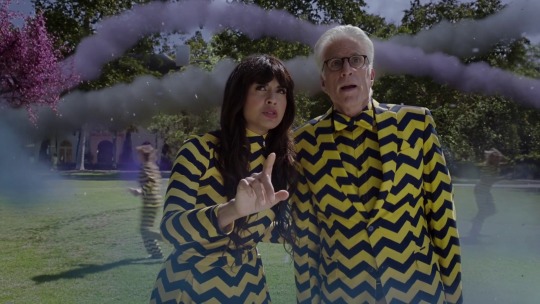
Imagine. Imagine a version of this show where the first season is basically the same, and the second season is...somewhat similar to how it is, but with more focus and direction, less time-wasting; a second season where figuring out that some fundamental change to their circumstances is necessary comes early, and instead of faffing about with ethical lessons in the fake neighbourhood again while Michael pretends he can get everyone to the Good Place, we get down to business with going on the run and into the Bad Place to find the judge and petition for help. Imagine this show, but the third season has none of that return to Earth crap, and instead, is the neighbourhood experiment from season four, properly fleshed out. And then season four is all about going to the Good Place and solving the problems there, addressing issues with the concept of utopia and the ineffectual bureaucracy of obsessive niceness (used for comedic effect in the actual show, but c’mon, there’s a whole untapped reservoir about morality there). Each season could have (gasp!) a properly-planned and plotted arc, dealing with a different school of ethical considerations, and I dunno, maybe the characterisation could have trajectory too, and the characters could vitally shape the storytelling, and maybe not get their personalities and experiences erased and rebooted over and over again, nullifying large swathes of the narrative which came before? Ideally, they could be reset zero (0) times, or at least have all their reboot experiences dumped back into them in the first few episodes of season two, so that they could proceed from there as whole people. Rebooting everyone’s personalities is not actually necessary to the plot in any way, and is, actually, incredibly detrimental to storytelling and especially, character development. Imagine this show, but just chilling out and actually telling a coherent story?
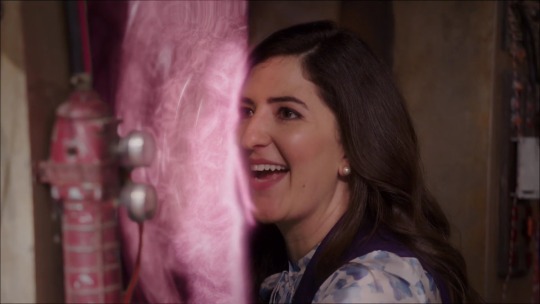
I am all the more annoyed by how things turned out on this show because I know that the four seasons were planned for, rather than being the result of cancellation; the idea that the creators sat down and ‘plotted’ (using that term loosely) to make this mess drives me a little wild. The (attempted) avoidance of the dreaded ‘stagnation’ seems obvious, and it leads to major narrative shortcuts and jumps and instances where the show spends an episode or two on what should have been a half-season’s development, minimum, and yet at other times all momentum grinds to a halt for a bizarre bottle-type episode where the characters just talk about a concept for a while or work on some unimportant romantic subplot. The various ethical concepts that the show heavily incorporated as its bread and butter in the first season start to stick out like sore thumbs in season two, seemingly wedged into one episode or another for no real reason other than just to be there, and the fact that the show lets go of the idea of moral choices in the life mattering at all in the end leaves the backbone of the show in a very strange shape. I said in the season four review that I didn’t expect the show to come up with some One True Answer about how people should live their lives, but that I was baffled by the fact that the show side-stepped that altogether; what I expected them to conclude was something in the line of ‘we recognise that life is complicated, not all situations are created equal, and it can be hard to know how to proceed ethically or even to access ethical options within one’s circumstances. Still, it is important to do your best, not only for yourself but for your community, because the more good you put into the world, the more there will be to go around and come back to you. What matters most is that you are doing your best with what you’ve got’. The fact that the show distracted itself with fixing how the afterlife rewards people within the afterlife means that it suggests no incentive to perform moral actions in life, and frankly...who gives a fuck? The real world is the place we’re all living in, and there’s no point starting a conversation about morality in real life if the conclusion is just ‘guess we’ll straighten out all the fascists and bigots and the other pieces of shit after they die, so don’t worry, everyone gets to Heaven eventually!’
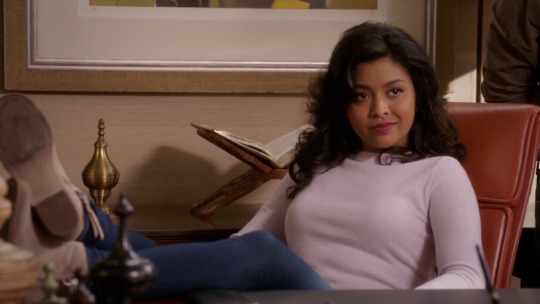
Anyway, if that seems like just a reiteration of what I said in the season four review, well. I’m still baffled by it. The other thing I was going to talk about in the season four review but held for the full series instead was that one big thing that I have railed about all the time since season one, and that’s PACING. For all ye wannabe-writers out there, please understand how important pacing is. Even vital plot or character beats can seem like meaningless filler in a poorly-paced story, because your audience’s mind is hardwired to try and follow narrative cues that are being incomprehensibly muddled. Standard structure can be played with, but if you toss it out in favour of ‘stuff just happens, ok? Except when it doesn’t’, you just end up with a soup of disconnected story ideas, and nothing threading it together. Character interactions and especially developments can help to create the through-line you need to keep the story functioning despite itself, but as variously noted with The Good Place...initial characterisation? Strong, excellent. Development? Not so much, not least because they kept getting deleted and rebooted. Also, time skips kept happening, and that’s a great way to fuck over your narrative coherence even more: remove the recognisable constant we call time! It’ll be fine! As with all things, it is perfectly possible to play around with this stuff, but you have to know what you’re doing and be doing it for a good reason, and that’s not what they had going on here. This was narrative soup, and when you have a soup, the pieces all kinda meld together and lose any individual purpose, meaning, or power they may have had. The result in this case was not bad, but it really could have been so much better, and literally all it needed for that was some attention being paid to the story structure via pacing.
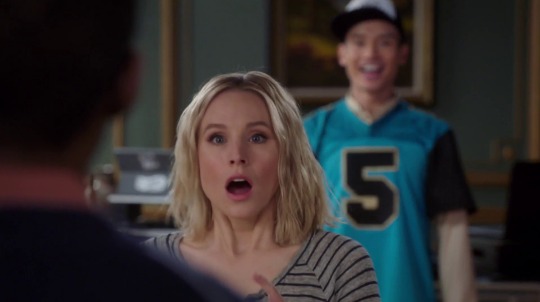
So. The good news is, I think I have pretty well exhausted all of my complaints by now, and that leaves us with the good stuff, of which there was no paltry amount. The show was not a hit by accident (even if I do feel that it’s success had a lot to do with people sticking around after the spectacular first season, and not because it stayed strong throughout), and even if there was a lot of soup going on, what comprised that soup was all really fun and unique, and this made for a wonderful piece of light-hearted television that could be as hilarious as it was insightful. It still had a lot of great takes on things, the commentary was strong (even if it pulled all its punches towards the end), and whether the storytelling was ebbing or flowing, it was always delightful. The show also managed to pull a miraculous finale out of its hat, and that’s a rare thing in television; however the story wobbled over the course, the ending provided enough satisfaction to forgive just about any sins, especially if you don’t happen to have been watching with a deliberately critical eye. Do I wish that Eleanor got to hook up with a chick on-screen some time instead of just making a lot of bi remarks? Yes. Do I consider the show to have queerbaited instead of providing genuine rep? No. Is the underselling of the queer content my most significant representation complaint? Yes, it is, and that's good news considering the world we live in and the dearth of quality representation that the industry has brought us to expect.
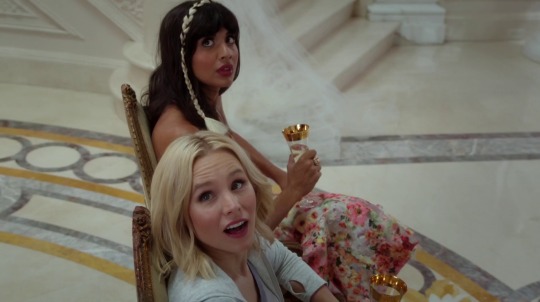
There's an important distinction to be made there, regarding the tokenistic representation that is very common these days in tv trying for brownie points and good publicity, exactly that kind of 'political' inclusivity that conservatives are always bitching about. It should not be surprising that I support that tokenism over the alternative of having no representation at all, but it can still be quite disheartening to feel like your identity or the identities that you value are being referenced as nothing more than an opportunity for some shitty producer to perform wokeness for attention, praise, and the almighty dollar. I bring this up because - even though The Good Place never really worked up much of a boost to its content rating - one thing I felt that it did really, really right was providing representation without it feeling tokenistic at all. Eleanor's bisexuality wasn't as prominent as I might have preferred, and as noted through the course of the show, there were times I feared it was more bait than real rep, but reflecting on it at the end, the way it was included feels organic, it never gets in the way in order to ensure the audience notices and is dutifully impressed. The number of women around and the multicoloured casting plays out even better; I never once felt cynical about the gender balance I was seeing, and I've said it before but I'll say it again: the fact that the show was packed with names from across the world gives me so much life. I'm still a little salty about Chidi's Senegalese origins getting the shaft (and we won't talk about 'Australia'), but the nonchalant diversity of naming goes such a long way to embracing the idea that this is a world for everyone (and an afterlife for everyone, too). And where anything else might fall apart or lose its way, that is an affirming thing. If you want feel-good tv, it’s here. This is the Good Place.

9 notes
·
View notes
Text
Black-ish’s lenses
Black-ish’s humor without stereotypes blended with an unafraid look at societal issues is unique, and so is their framing of those issues. Rather than having its characters simply observe and comment on issues from a distance, Black-ish thrusts its characters (and thus its audience) into the heart of the debates. From June Bug pushing Dre out of a car to save his scholarship to Junior running for class president, Black-ish finds ways to discuss issues by bringing the characters near them. The show used June Bug pushing Dre as a way of discussing the sacrifices a community makes to get someone out, and used Junior’s school elections to comment on the larger political situation regarding the 2016 election. Poniewozik discusses Black-ish’s unique framing of race in his 2015 article on diversity in the television industry, saying “Series like “black-ish” and “Empire” can pass a sort of racial version of the Bechdel Test, the feminist-criticism measure of whether a story has two female characters who talk to each other about something besides a man: having minority characters talk about race in a way that’s not always in relation to white people” (Poniewozik). This article discusses diversity and successful Black representation on TV through the shows Black-ish and Empire. It also discusses how each of these shows tackles social issues like the use of the n word or spanking your children through a black lens. Black-ish is unique in framing compared to previous shows, because issues are frequently addressed and seen through an upper-middle class black lens. To exemplify this, Poniewozik references Black-ish’s season 2 opener, in which Jack, the youngest member of the Johnson family, says the n word. Poniewozik praises the show’s understanding of the nuance of issues, saying “But the true brilliance of the episode, like many “black-ish” episodes, is that it used the premise to demonstrate that there’s no single “black” position on the word — any more than there is among any group on any issue” (Poniewozik). The show discusses how positions on the use of the n word vary among black people, which is a discussion that I would wager has never been had on a sitcom before. Poniewozik’s point in his article was the need for diversity of this type on television. Since 2015, it seems this industry has heard his call, with shows like Kings of Napa, Abbott Elementary, and Grand Crew all depicting different and unique black struggles.
0 notes
Text
Read through light novel vol. 4. Random thoughts.
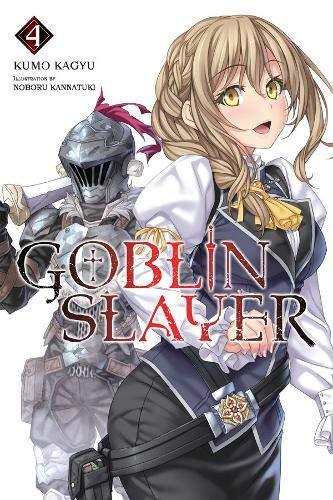
I don't think I've ever seen an adaptation/source material relationship quite like that between Goblin Slayer's anime and light novels.
Episodes 1-4: most of vol. 1. Episode 5: mix of vol. 1 and beginning of vol. 4. Episodes 6-9: Entirety of vol. 2. Episodes 10-12: Rest of vol. 1. It certainly wasn't a bad season but it's funny to see the books adapted in such an almost random order. Closest I've ever had to this was Rising of the Shield Hero, which adapted vols. 1-5, the beginning of 6, and then at the end a little bit from vol. 10.
“There are people who use a torch instead of a lantern, because it doubles as a weapon.���
Guild Girl mentioned with a smile that rats and insects both despised fire.
“What kind of adventurer would do something like that?”
Goblin Slayer: "You've got something on your face."
Goblin: "GORB?"
[Stabs goblin in face with burning torch]
Goblin Slayer: "It was pain!"
That second chapter really suckered me in at first into thinking it was a flashback, but I suppose that was the idea. It's like when Batman saves a family from an alley mugging. It's a classic way of showing the hero keeping what happened to them from happening to anyone else. Goblin Slayer is making a difference, even if he doesn't always feel like he is because of how endless the world's number of goblins seems to be.
As much as Spearman could stand to take the hint that Guild Girl is not into him, I do really like that Spearman isn't at all a bad dude. Again, he has a spear but he's not a Motoyasu. He's not hitting on every attractive woman he meets or treating his party as an excuse to build a harem for himself. Witch feels like his trusted ally and equal before anything else, not just someone he's trying to impress because she's got big bizongas. Admittedly I'm not entirely sure what his relationship with her is. The implication is that she maybe likes him romantically (seeing Guild Girl as a romantic rival and all) and they talk about going on "dates" but it's hard to tell how serious either is being about that.
The chapter with the goblin sentry guard was kind of interesting for me, because part of the way into reading it I realized I had read it before...the manga version. I'm stumbled upon the chapter by accident through a Pintrest link of one of the pages where Goblin Slayer is carrying poor spear girl (Spearwoman?) out of the cave. At the time I'd thought it was a fan-comic, not because it was badly drawn but because the goblins had a different design. Between that and this chapter, I think the manga's was harder to get through, but for a different reason than the anime could be. The anime had audio, so the screams from Fighter and Priestess when the champion bit her arm were what left me really shaken up (Fighter especially because, while I wasn't seeing it, I knew what was happening). With the manga, how much of Spearwoman's body was shown off, the positions she was in, and the angles of the camera made it feel uncomfortably like a porn comic. I don't have a problem with fanservice in and of itself. This volume and previous ones have plenty of fanservicey artwork. But there's a time and a place for it. Cow Girl and Priestess trying on battle bikinis and High Elf Archer waking up in the nude? It's pervy but still harmless. A woman being violently raped should not be used to titillate the audience and I'm so glad the light novels have had the good taste (so far) to not do anything like that with its illustrations. Even High Elf Archer, when her clothes were torn away by the goblins in Water Town, she escapes non-violated and we get the art of her helping Goblin Slayer walk, but she's not drawn at all in a sexual way despite being half-naked.
But back to the actual volume, I really liked showing things from the goblin guard's perspective. The goblin happy with the spear he stole...at first. But then wondering if the belt would have been better and then hating the goblin who got the belt instead of his "stupid" spear, with said goblin likely thinking the same about him, just the other way around. Again, they're not mindless monsters. They're incredibly selfish and self-centered, each one believing he is the best and thus that he is the one entitled to everything. It also serves as another reminder that goblins are no victim of racial circumstances. Yes, there are no females of their race and thus they have to force themselves on others in order to procreate...but they seem like they would probably be doing that regardless. When their victim fights back, they hurt her more as punishment and to break her. And when their victim doesn't fight back, allowing themselves to be violated so that hopefully it won't hurt anymore (yeah, there's a lot in this chapter that's hard to get through but that especially with how unfortunately real that mentality feels), the goblins hurt them even more, taking it as an excuse to go as far as they can with them.
These aren't mindless monsters that have to rape to survive. They like the pain and suffering they cause others.
Which is where he comes in; to stab them, impale them, light them on fire, and kick them in the d*ck before stabbing them again.
Hm? Cow Girl thought suspiciously, but an explanation was soon forthcoming.
“Today is...a bit of a rough day for it...”
“Sure.” Cow Girl gave a strained smile and nodded. It was something every woman had to deal with.
You know...I've read through three other fantasy LN series in full thus far. Overlord, Konosuba, and Rising of the Shield. And I'm pretty sure out of all of them (and even out of the majority of other series I've read/watched), Goblin Slayer is the only one I've seen that even acknowledges girls having their periods. I get that it's like watching a character go to the bathroom; it's not usually relevant to the story and you can just assume it's happening off-screen. But it still just sat with me for a moment and I went "...Huh. Yeah, that would be a problem for them, wouldn't it?"
Also, these two are just adorable together. I like that they're friends. They don't pass the Bechdel test (though High Elf Archer and Guild Girl surprisingly do) but their bonding was still great to read.
“I have no interest in magical swords, but I do have a ring.”
“Oh yeah?”
“It allows underwater breathing,” Goblin Slayer said briefly. “Even if the goblins stole it, it would do no harm.”
“What would they even want it for? Wait a second—you just assume it’ll get stolen?”
Spearman was pressing on his temples, but the steel helmet nodded and said, “Of course. It wouldn’t fit on a goblin finger.”
After Cow Girl and Priestess trying on the battle bikinis I was already laughing at the idea of a Goblin Slayer beach episode. Now I really want to see that. Everyone's on the beach showing off their summer bodies and swimwear while he's still in his full armor. They're all playing volleyball and building sandcastles and he's slowly turning the ocean red as he's just murdering goblin sharks all day.
All seriousness through, I do love this consistency with Goblin Slayer's character and methods. We've seen tons of goblins throughout this story and the only ones that maybe would have benefited from underwater breathing would have been the ones on the boats in the sewers of Water Town. Otherwise, yeah, it'd be useless to a basic nest and they'd have almost no way of finding out what it can even do, so they wouldn't even move elsewhere to take advantage of such magic. Plus he has apparently destroyed nests by flooding them before, so it makes sense he'd want to prepare himself for just in case he ever got caught up in the water.
Also, Goblin Slayer, Heavy Warrior, and Spearman were a really fun team to see work together. I love the sense of respect the three share and that Goblin Slayer never has any problem acknowledging how much better they are than him when it comes to things like leadership, charisma, enthusiasm, or just certain general abilities. If there is a little bit of competitiveness it's still very friendly and never becomes a pissing contest between the three. Heavy Warrior and Spearman don't exist just to make Goblin Slayer look good by comparison. In fact, they're very good at what they do. It's just what they do isn't murdering the ever-loving sh*t out of goblins, thus why they're not the ones we're following the story through.
“I picked up the spear,” he said. “The shaft is broken, but the point remains.”
"You are hurt and broken right now. But you can recover. You can be okay again."
This is probably just me looking way too deep into things but I like to believe Goblin Slayer said those words because of his party's, and especially Priestess', influence on him. I'm sure he's saved many women from goblins in the past but before Priestess I think he just saved their lives, sent them off to the temple, and then just kept moving on without looking back, thinking about nothing other than killing more goblins. After all his and Priestess' time together, and her making it clear he played no small part in helping her keep moving after the tragedy of her first party, maybe he's now wondering if there's more he can do to help these women recover, even if it's just a few kind words to help them hold onto their sanity after what they've been through. Spearwoman was so attached to that spear that hearing that it's still intact enough to be fixed maybe helped her believe she could be too.
“Isn’t it?” She stuck out her delightfully average chest, as proud as if she had grown it herself. “And you know what? The person who brought it was someone you saved recently.”
“...Was it, now?”
“Uh-huh!” Guild Girl let her eyes drift to the corn with an expression that bespoke relief. It was rare that adventurers or mercenaries found themselves with a second chance when they had failed once. “It’s great, huh?”
Does that imply it was Spearwoman? I'm hoping so. It'd be nice if someone who was used by the goblins (hopefully NEVER one of the girls in the main cast) did still manage to go back to being an adventurer again and wasn't just left permanently defeated. Honestly, it'd be cool if either her or Fighter or someone like I'm describing came back and adventured with GS's crew for a bit. Goblin Slayer witnessed what they do and it almost happened to Priestess and High Elf Archer but we don't have anyone yet who was raped by the goblins and yet is still fighting. Sword Maiden is about the closest but her very understandable trauma and duties as the Sword Maiden keep her away.
God count: Earth Mother, Supreme God, Deity of the Basin, Krome
Original Reddit post: https://www.reddit.com/r/GoblinSlayer/comments/fu0b1w/read_through_light_novel_vol_4_random_thoughts/
1 note
·
View note
Text
The Good Place season three full review
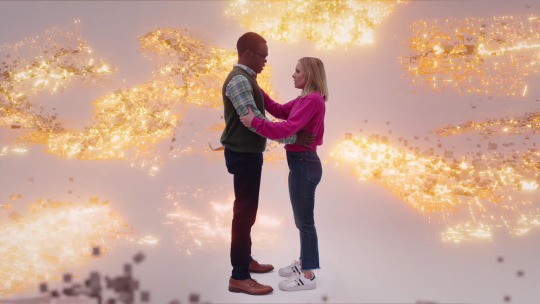
How many episodes pass the Bechdel test?
91.66% (eleven of twelve).
What is the average percentage per episode of female characters with names and lines?
46.26%
How many episodes have a cast that is at least 40% female?
Ten of the twelve, with seven of those hitting 50%+.
How many episodes have a cast that is less than 20% female?
Zero.
How many female characters (with names and lines) are there?
Twenty-two. Seven who appeared in more than one episode, three who appeared in at least half the episodes, and three who appeared in every episode.
How many male characters (with names and lines) are there?
Thirty-one. Twelve who appeared in more than one episode, three who appeared in at least half the episodes, and three who appeared in every episode.
Positive Content Status:
Same-same. The female characters are still great, bi rep exists, the racial diversity remains strong (though I have my doubts about the writers’ capacity to portray cultural diversity). It’s not gonna blow anyone’s mind, but it’s all there, and that’s a good thing (average rating of 3).
General Season Quality:
A hot mess. Not hard to watch in any way, not infuriating, but frustrating, yes, and at times wasteful. It doesn’t have a strong sense of the creative team having known what they wanted to make, and this is not the format for just winging it and seeing what comes out.
MORE INFO (and potential spoilers) under the cut:
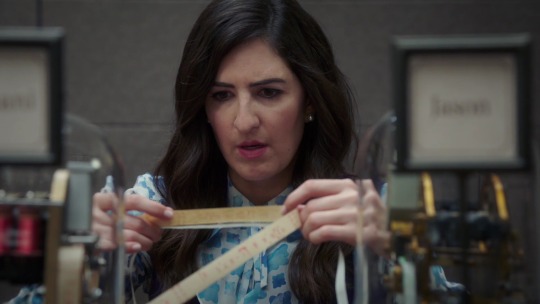
So. I referenced LOST at one point during this season, and the advice Mike Schur was given about avoiding narrative stagnation, and I mentioned that I don’t actually think that was ever a problem for LOST. The reason for that is that LOST made its charactersation so thoroughly integral to the plot that even when it seemed that nothing particularly important was happening, plot-wise, something was always happening character-wise, and that was by association, vital plot. It’s also part of the reason I am die-hard for that show, because character is my be-all and end-all, without which, a story hardly has a point in my eyes.This is the lesson I wish Mike Schur had taken from LOST, because the characters in this show? They’re all wonderful in their own distinct ways, but they also haven’t really developed since the first season (or the humans haven’t, anyway). The reason for that - touched on already, variously - is that those bastards keep on being reset, their memories wiped, everything new again so that they can repeat the same character development, but offscreen where it doesn’t take up any of that important plot space. And because their characterisation isn’t moving anywhere (it’s...stagnating), they essentially function as placeholders in the plot, not necessary or meaningful pieces.
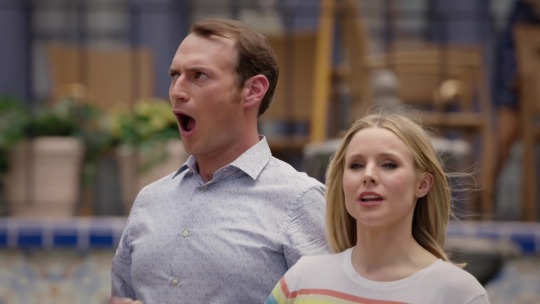
This reminds me of another show that I ended up having big problems with, Orphan Black, which suffered from (among many issues) a lack of character agency. The characters in The Good Place do have at least some agency, they are allowed some decision-making power, but not a lot of it, especially in this season where they’re mostly just buffeted around by plot machinations they can’t control and often, don’t even understand, and it doesn’t make for very interesting viewing (this is why Michael and Janet get all the best fodder: they have more agency than the human characters, they comprehend their situation in order to make informed choices on behalf of the others, and they’ve been shouldering all of the character development responsibilities since the beginning of season two). When plot drives characters too much instead of the other way around, the characters start to feel inconsequential, because their personalities aren’t going to impact their (after)lives, so they might as well not have any.

The thing about the characters not developing is that the centrepiece of the plot - the question of whether or not they can improve - is itself based on the idea of the characters developing, but since they already answered that question in the first season, the show now just keeps on repeating it in different scenarios with everyone ‘learning ethics’ from Chidi, which is nebulous and largely glossed over anyway. The changes of scenario don’t matter, firstly because the result is always the same (but not in a profound way, just in a lazy ‘we didn’t want it to get confusing by having people or events contradict something that happened before in some version they don’t remember’ kind of way), and secondly because we never see any real substance of the scenario changes, we just get clips and time skips. This leaves us with a narrative which rarely seems to have intent, just the occasional glimmer of insight or direction (i.e. when Jason highlights the impact of poverty (though the show has failed to translate that into a large-scale critique of systemic inequality), or the whole ‘no ethical consumption under capitalism’ thing), and the characters act as pawns but not, often, as conduits. The lack of real plot substance, as explored by the characters within it, kinda ironically leads to the very same stagnation that Schur was supposedly trying to avoid: the plot sometimes makes wild leaps from one thing to another, avoiding developing in any way for fear of spending too long on an idea and consequently not stopping on anything long enough to let it matter, and then at other times it stalls completely and wallows for the sake of just talking about some philosophical concept, even though just talking about something without both connecting it to the characters and watching it unfold meaningfully is exactly how you get a stagnant story (and a badly paced one, too). If it doesn’t matter, it’s not plot, it’s just window dressing. Anyway. I’m having deja vu and I think I’m in danger of just reiterating everything I complained about before (if I haven’t already), so I’m gonna let this one go and see how they pull it together (if they pull it together) in season four, which I have not seen yet so I am hoping for a pleasant, cohesive surprise. It could still happen.
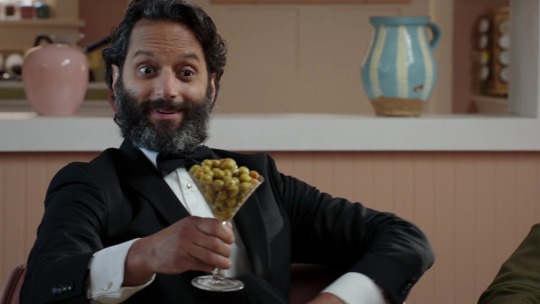
6 notes
·
View notes
Text
Continuum Season Three Full Review

How many episodes pass the Bechdel test?
92.3% (twelve out of thirteen)
What is the average percentage per episode of female characters with names and lines?
35.1%
How many episodes have a cast that is at least 40% female?
Six, episodes 3.02 “Minute Man”, 3.03 “Minute to Win It”, 3.04 “A Minute Changes Everything, 3.05 “30 Minutes to Air”, 3.08 “So Do Our Minutes Hasten,” 3.10 “Revolutions per Minute.”
How many episodes have a cast that is less than 20% female?
One, episode 3.09, “Minute of Silence.”
How many female characters (with names and lines) are there?
Twenty-four. Eleven who appear in more than one episode, five who appear in at least half the episodes, and one who appears in every episode.
How many male characters (with names and lines) are there?
Forty-six. Eighteen who appear in more than one episode, nine who appear in at least half the episodes, and none who appear in every episode.
Positive Content Status:
Aside from a higher average percentage of female characters per episode—and, not coincidentally, a much higher Bechdel score, there isn’t much to note. (Average score of 3.0)
General Season Quality:
Easily the best season so far, in terms of juggling storylines and characters.
MORE INFO (and potential spoilers) under the cut:

As solid as season two of Continuum was, it often quite felt as if it was ultimately stretched thin, with too many balls aloft. Looking at season three, it seems like the showrunners agreed, as many of the plotlines set across that season are quietly pushed aside—more on this later—and the result is a season that, while still juggling a lot, feels a lot more cohesive.
The show’s decision to reboot itself by shunting Kiera and Alec to a different timeline is one of those things that would normally give me pause: why should I care about Travis or Garza’s deaths, if they’re going to be undone? Why should I care about the previous two seasons, if, as this season suggests, it’s events were a tangential, transient part of Kiera’s life? And what of Carlos and Betty forming an alliance with Julian, one of the season two finale’s most interesting tidbits? As was noted in a conversation I had about the series, there is the risk of the show turning into something like The Good Place, where the continuous reboots and mindwipes can’t help but exhaust.
And yet…it works. Part of it is because time travel is part of Continuum’s core premise, even when it means only going back a week, and part of it is because the series actually understands the implications of what it’s doing. Yes, it’s weird to hear Carlos treat Red Kiera and Green Kiera as completely different people when the only things separating them is a week. And yet, he’s perfectly right: to paraphrase an episode title, a week changes everything, and the characters we meet throughout this season are not the ones in the Red timeline.

Furthermore, while the season abandons the Red timeline, it does not forget it, and the writers are able to use our knowledge and expectations to good effect. The story of Betty’s role as a Liber8 mole gains more poignancy because we know how it played out in another universe, where Carlos was more disillusioned with police work and more willing to choose her over the CPD. Alec’s anger over things like Escher and Emily feels more deliciously ironic, given what he doesn’t know about them. And of course, we get yet another set of complications, as Red Kiera and Alec’s presence in the new timeline throws it completely out of whack, completely derailing the future as we’d come to know it.
One of my favorite moments about Terminator: The Sarah Connor Chronicles, a series with a similar prevent-the-future premise to Continuum’s, occurs when Derek Reese and Jesse Flores, lovers and time-traveling freedom fighters from a future in which humanity battles terminators for survival, realize they don’t actually come from the same timeline. While their timelines of origin share generalities—enough that they don’t realize this until they’ve been interacting for weeks, if not months—they are not identical—Jesse has memories of experiences that did not occur to this version of Derek, and vice-versa. It remains one of television’s more interesting attempts to deal with the mechanics of time travel and timeline-altering, and similar elements form the backbone of this season of Continuum. And it works really well.

While the previous seasons played coy when it came to answering whether Kiera and Liber8’s shenanigans were helping prevent their version of 2077 or ensure it played out, by this season, it is clear that it is the former. While this means that Liber8 technically succeeds, it also means that the future it’s created also has time travelers, including some that may prefer the future where the world is owned by corporations to the one where Liber8’s presence brings them down (along with everyone else). It’s a smart expansion of the show’s premise and universe, and the timing couldn’t have been better: while the Kiera / Liber8 conflict is more interesting this season than it had been in the past (not that it was ever un-interesting) it also wasn’t a thing that could continue indefinitely. Something needed to change, and this season does that, and quite well.
Still, the biggest change isn’t the timeline shenanigans, but the one that occurs within Kiera herself. As mentioned, one of the more interesting things about Continuum during the first two seasons is that Kiera was, when one looked at the big picture, the bad guy. Liber8 may have had the body count to justify all the energy that’s expended to stop them (although it’s worth noting that this season has the group taking pains to make their campaign less reliant on indiscriminate bloodshed) but Kiera is the one supporting the continued oppression of the 99%.
While the first two seasons of the show got a lot of mileage from the dissonance between Kiera’s politics and her role as hero, this one finally begins the journey to her epiphany, and the road to her realizing that her 2077 cannot be allowed to exist—even when doing so guarantees that her son will not exist either—is one of the season’s best stories, and it not only again cements her as one of the top-tier sci-fi protagonists on television, but also leads to the series’ biggest “hell yeah” moment to date, as she teams up with Liber8 in order to prevent both the future she knows and a far worse one.

On that note, if there’s an element that consistently doesn’t work this season, it’s the addition of Brad Tonkin as a love interest. As mentioned before, he makes sense from a storytelling perspective: he’s reverse Kiera, the spouse and parent from the future who willingly gets himself stranded in the past in order to change the future. Furthermore, there’s plenty of other reasons for him to be there: he not only provides proof that the battle being waged in the present has concrete (and terrible) consequences, but he’s also vital to the season’s “who killed Green Kiera?” subplot. I’m not sure if him and Kiera bonding the way they have is an example of a romance that’s been shoehorned in, one that simply hasn’t had time to develop, or one that makes sense for the kind of characters Kiera and Brad are, and frankly, the answer doesn’t matter: it still strikes a very odd chord, and while it’s not an entirely unpleasant one—there’s something weirdly appealing about all their interactions—I can’t help but feel that it didn’t need to be here.
Season three is Continuum’s best season so far when it comes to the Bechdel test, with all but one episode passing. At the same time, this is an excellent showcase of the incompleteness of the Bechdel test as a measure of feminism—that improvement doesn’t translate into a better positive content score. Furthermore, it’s hard not to notice that this season ends with the loss of three key female characters, who are also all three women of color. While the show still has considerable racial diversity, all of it is male, and that is a problem. It feels odd that a show that is so fundamentally political can also be negligent when it comes to things like this, but that’s also not surprising, or new.

Still, it’s hard not to accept these circumstances, given how solid the season is as a whole, and just how different Continuum continues to be. For its faults, its singular and very defined point of view—a rare thing, in TV, especially when it comes to entities as deified as the police—combined with its skill at under-appreciated storytelling elements like world-building and cast juggling, continue to make it pleasure to watch.
2 notes
·
View notes